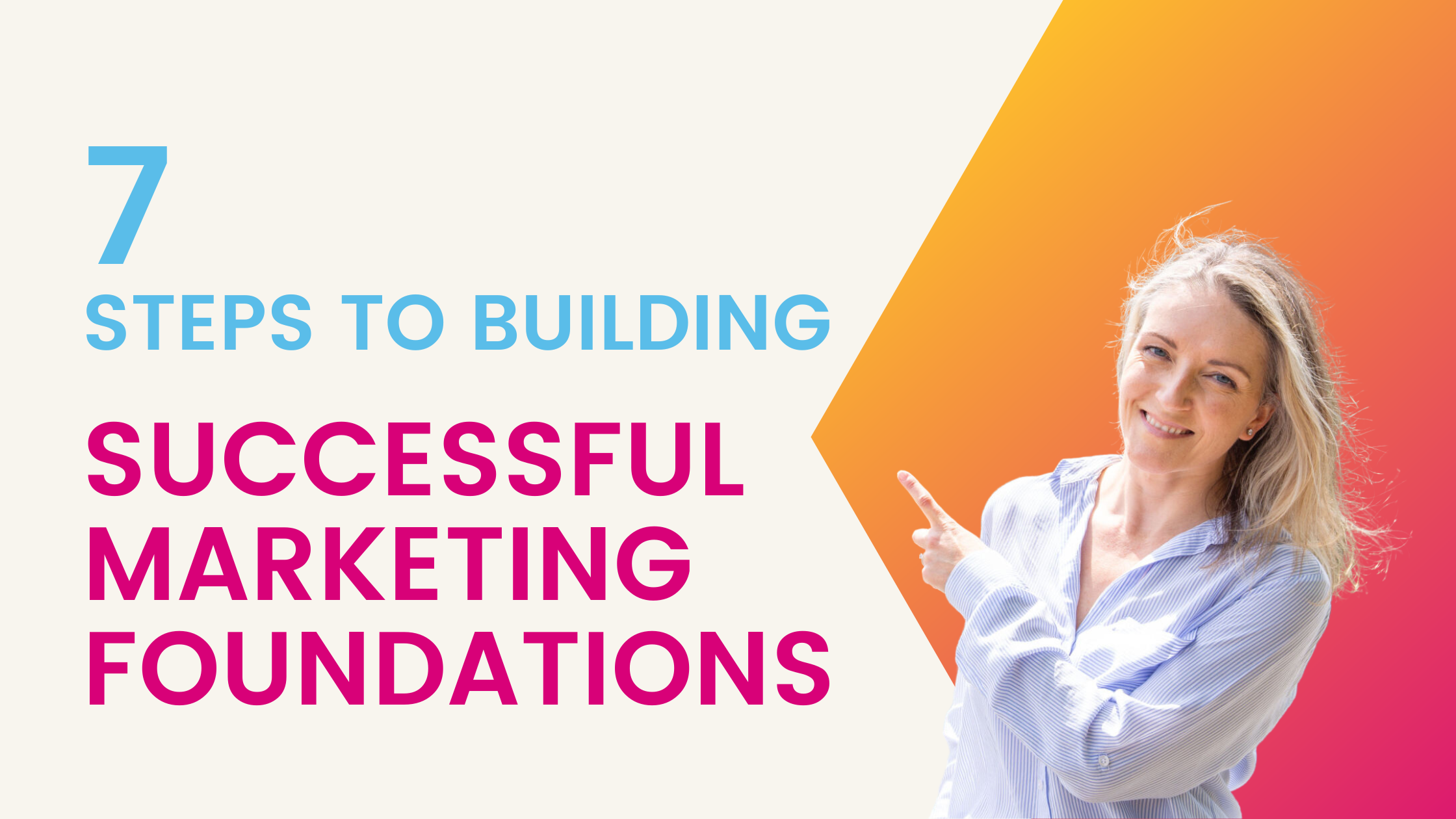7 Steps to Building Successful Marketing Foundations

7 Steps to Building Successful Marketing Foundations
Business is competitive. So establishing the right marketing foundations for your business is a pretty fundamental starting point to help you to be as successful as you can. To that end, I’ve put together (in my opinion) eight crucial steps that all start-ups and SMEs should follow to help them thrive.
#1 Develop a Clear Brand Proposition
Your brand proposition is the unique value your business offers to customers, and lays the groundwork for pretty much all other marketing efforts. It defines your positioning, differentiates you from the competition by showcasing your unique values and personality, and clearly communicates the benefits of your products or services. That’s why it’s important to take the time to identify and articulate your brand’s core values, key messages, and USPs.
#2 Align Your Visual Brand to Your Brand Proposition – and do so consistently!
Make sure your visual assets, like your logo, colour palette, typography and imagery, all align with your brand proposition. Then look to create a visual brand style guide to keep everything consistent and help to build recognition and foster trust. Consistency is key. So make sure your written brand (including your value props, USPs and other core messaging and values), flows through your marketing activity, from your social media profiles to email campaigns and ads. In a nutshell, make sure that your messaging reflects your brand’s values and resonates with the needs of your target audience (more on the audience stuff below).
#3 Know Your Audience
Understanding your target audience is crucial for effective marketing. The more you understand your audience, the more focused you can be with your strategy and the more successful the results. Start by identifying your customer needs, pain points, and buyer preferences. This is your ideal customer profile (or ICP) and it will help you to create targeted campaigns that speak directly to your audience, using tailored messaging, content and offers to resonate with their needs, motivations and stage in the buying journey.
#4 Research Search Terms
Search engine optimisation (SEO) is how you drive organic traffic to your website. Keyword research will identify relevant search terms that align with your brand proposition and target audience’s search intent. (Worth noting here that there are plenty of cost-effective and even free options available to help you with this). Then make sure you’re using those terms in your website content, meta tags, and headings. Remember to keep monitoring your search terms and SEO strategy regularly and use them to feed your website and other content.
#5 Get Your Website in Tip-Top Shape
Now’s the time to make sure your website is at its best. Your website is the digital face of your brand, and often the first point of contact for potential customers. It needs to be visually appealing, user-friendly, and responsive. It needs to make important information easily accessible. And it needs to get across your message clearly and to the point, and talk to the needs of your buyers.
#6 Write Fresh Content Regularly
Content marketing is a powerful tool for establishing thought leadership, attracting organic traffic, and engaging your audience. Develop a content strategy that aligns with your brand proposition, key search terms and caters to your target audience’s interests. Create high-quality, valuable content, such as blog posts, videos, and infographics, all of which should serve to educate, entertain, or solve problems for your audience. Regularly publishing fresh content builds brand credibility and keeps your audience coming back for more.
#7 Invest in Marketing Technology like Email Automation and CRM
Marketing technology can streamline processes, improve customer experiences, and boost marketing efforts. Invest in email automation platforms to nurture leads and build relationships through personalised, automated email campaigns. Implement a customer relationship management (CRM) system to effectively manage customer data, track interactions, and tailor your marketing strategies accordingly. These tools empower you to deliver targeted messaging and measure the success of your sales and marketing campaigns.
Conclusion
Building the right marketing foundations for your business is an ongoing process of continually evaluating, refining and adapting. By starting with these eight steps, you’ll be well-positioned to thrive.
Finally, it’s also important to recognise when you need expert guidance. And for many start-ups and SMEs, seeking the assistance of an experienced marketing professional or agency can bring specialised knowledge, experience, and that all important fresh perspective. If that’s you, get in touch.

Angela Cattin
I work with B2B technology brands that want to look good and sell more. Whether you're a start-up, SME or channel partner, I work strategically, and pragmatically, to help you achieve short and long-term business goals on a flexible and affordable basis.

Angela Cattin
I work with B2B technology brands that want to look good and sell more. Whether you're a start-up, SME or channel partner, I work strategically, and pragmatically, to help you achieve short and long-term business goals on a flexible and affordable basis.
Latest Posts
Featured Posts
About Me

Hi, I'm Angela and I work with B2B technology brands that want to look good and sell more.
Stay in the Know
You may unsubscribe from these communications at any time.
More information can be found in the Privacy Policy.












